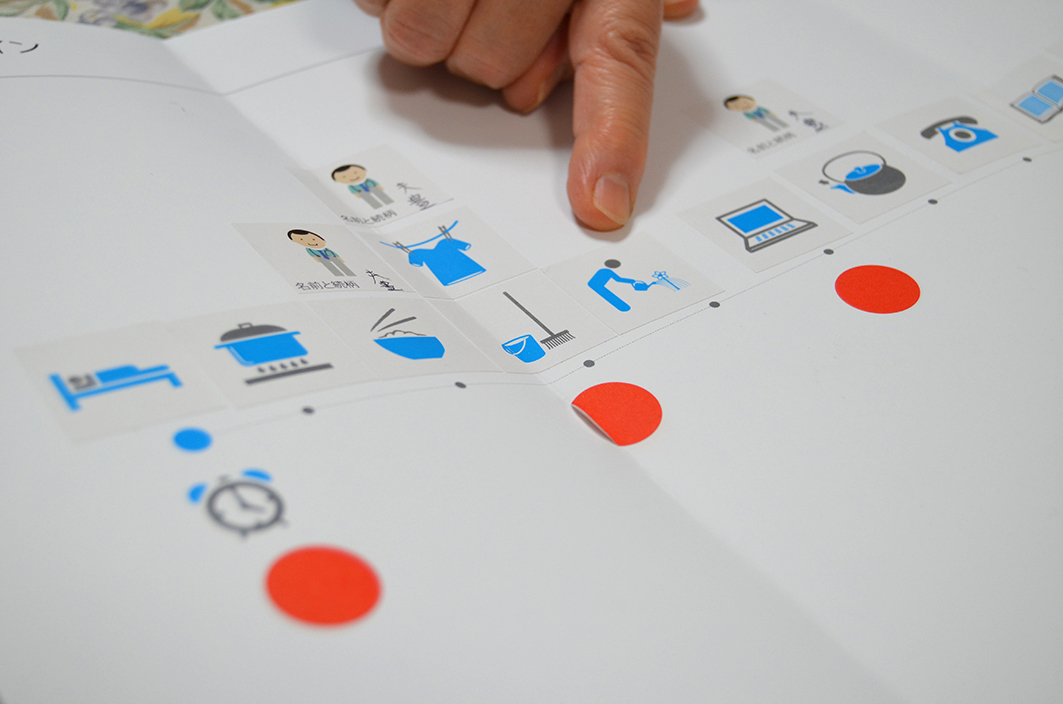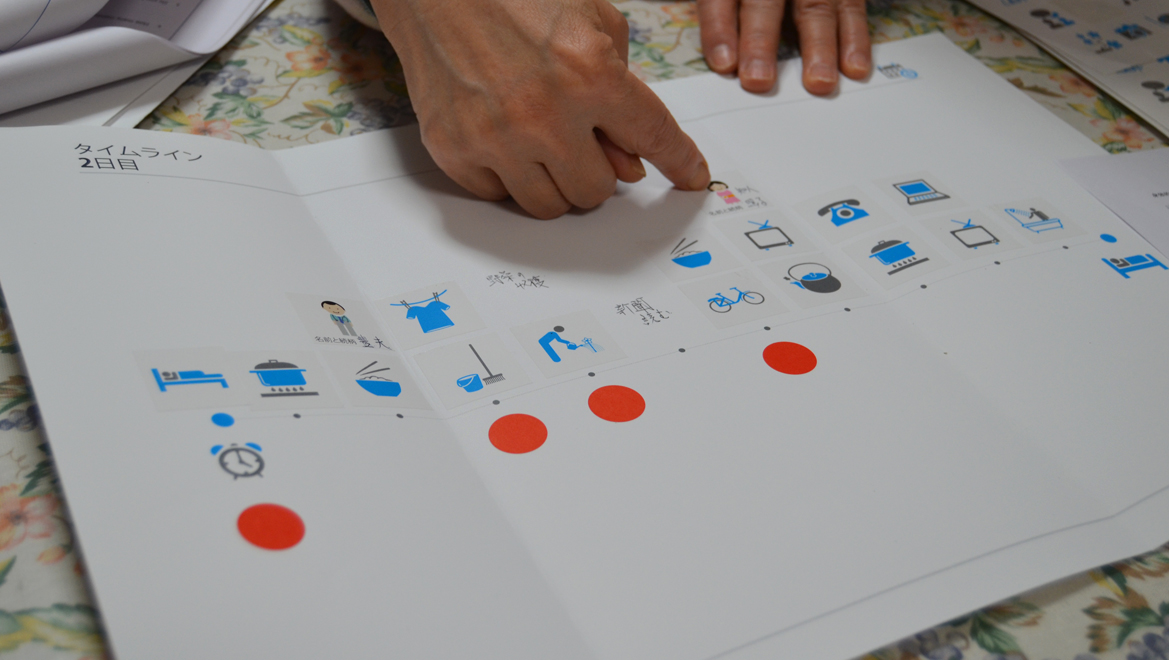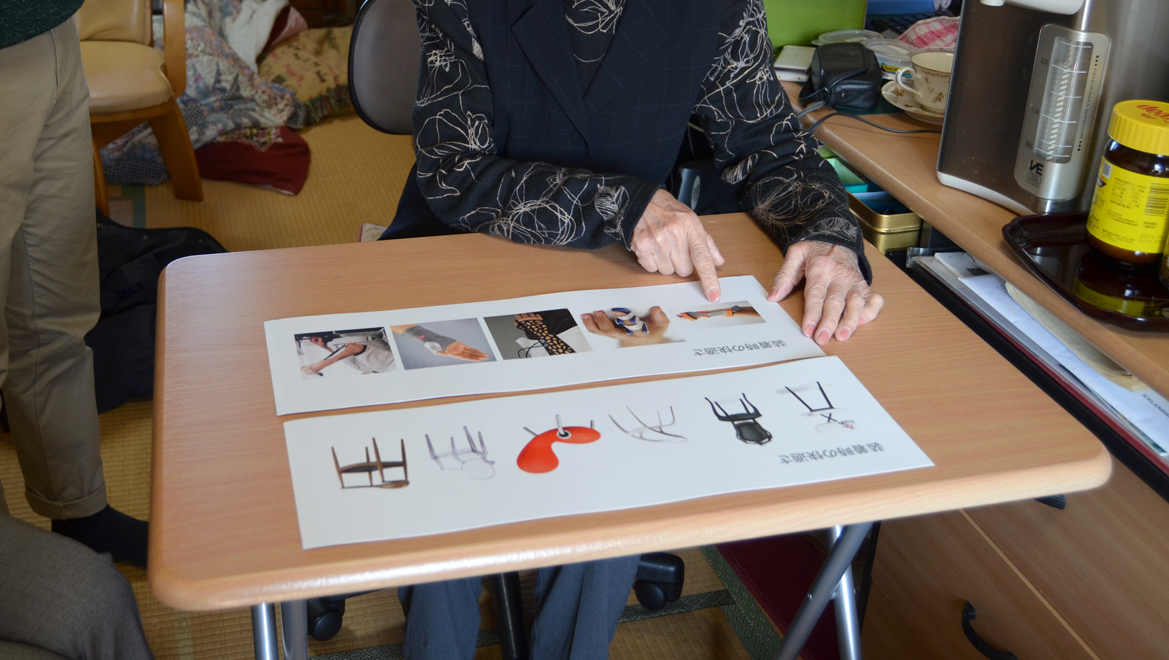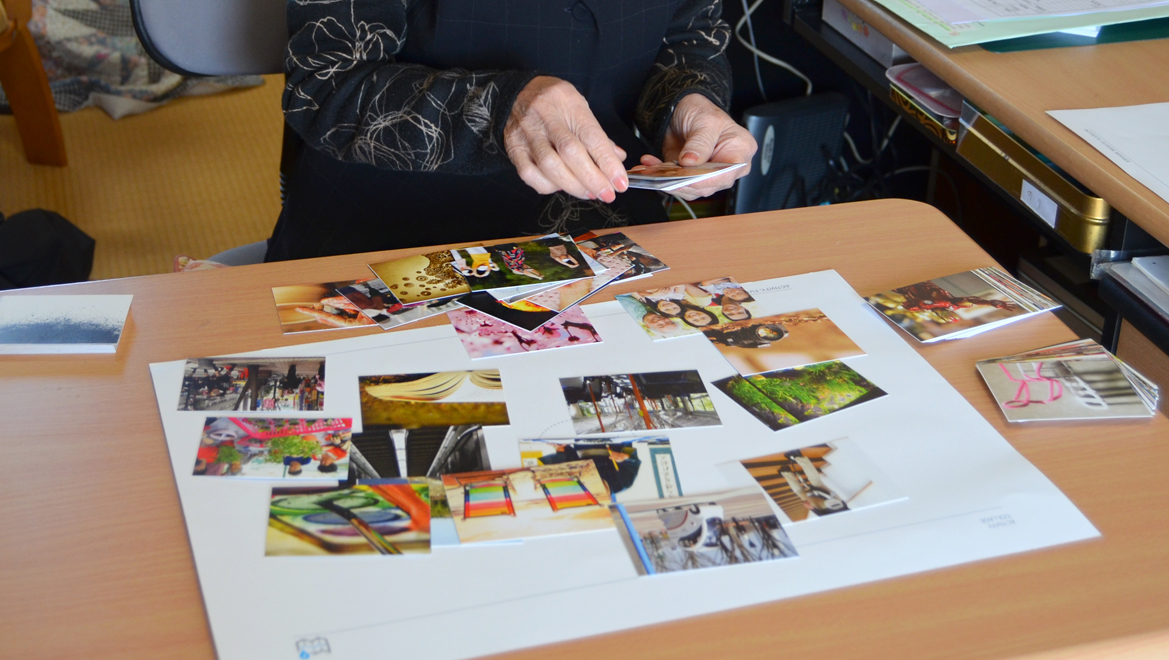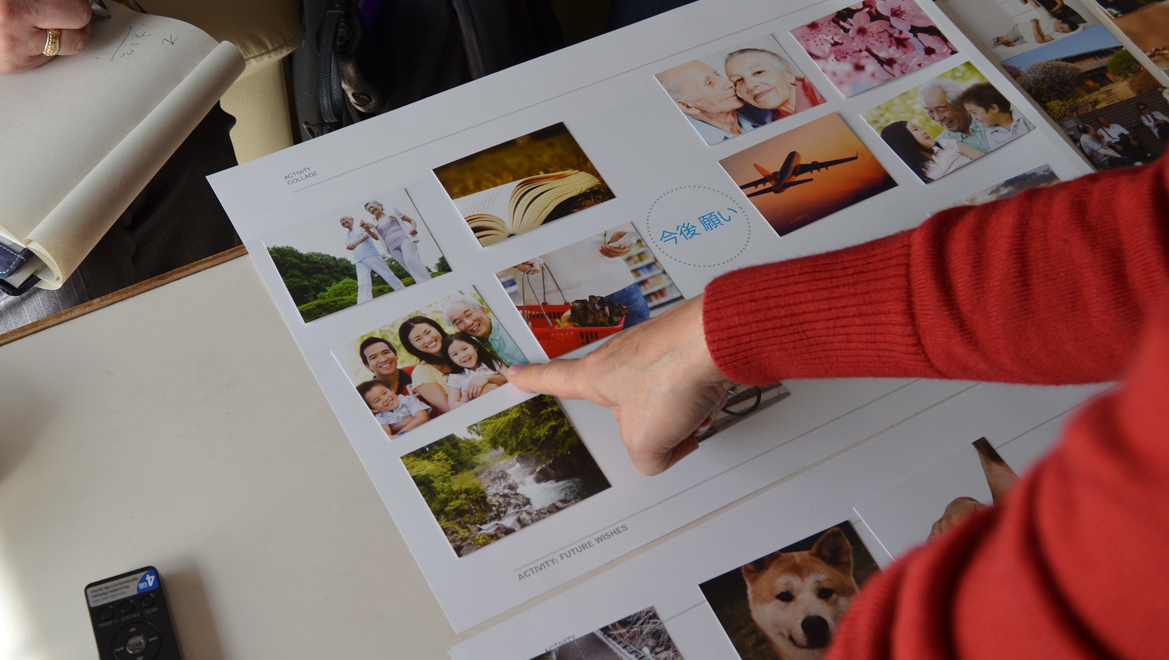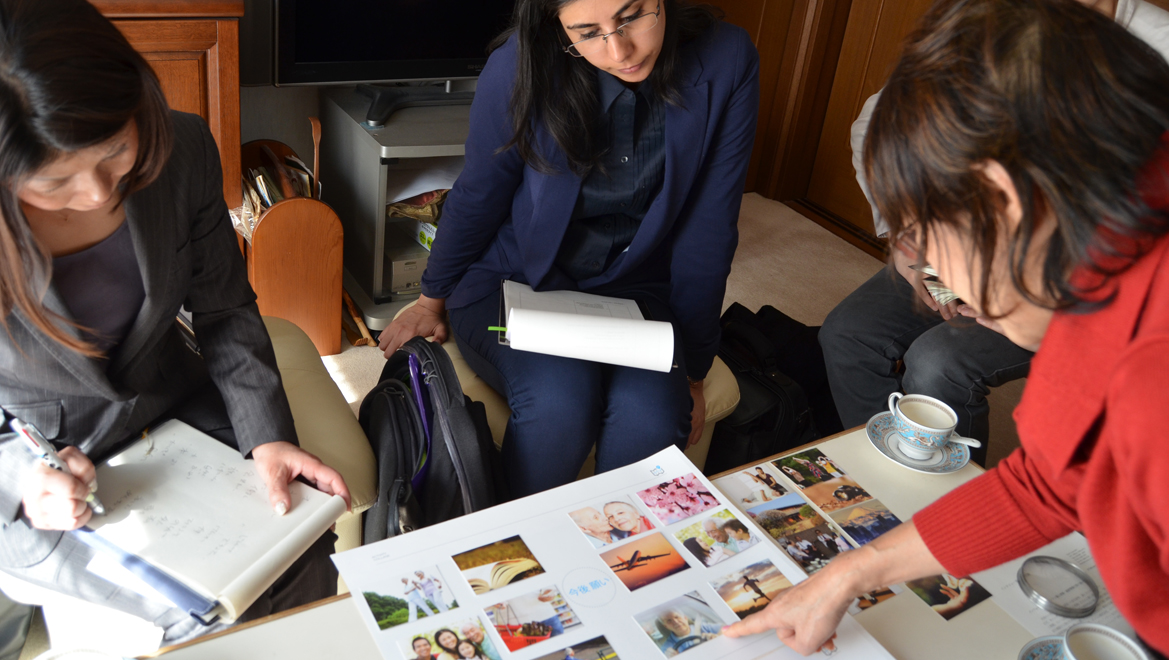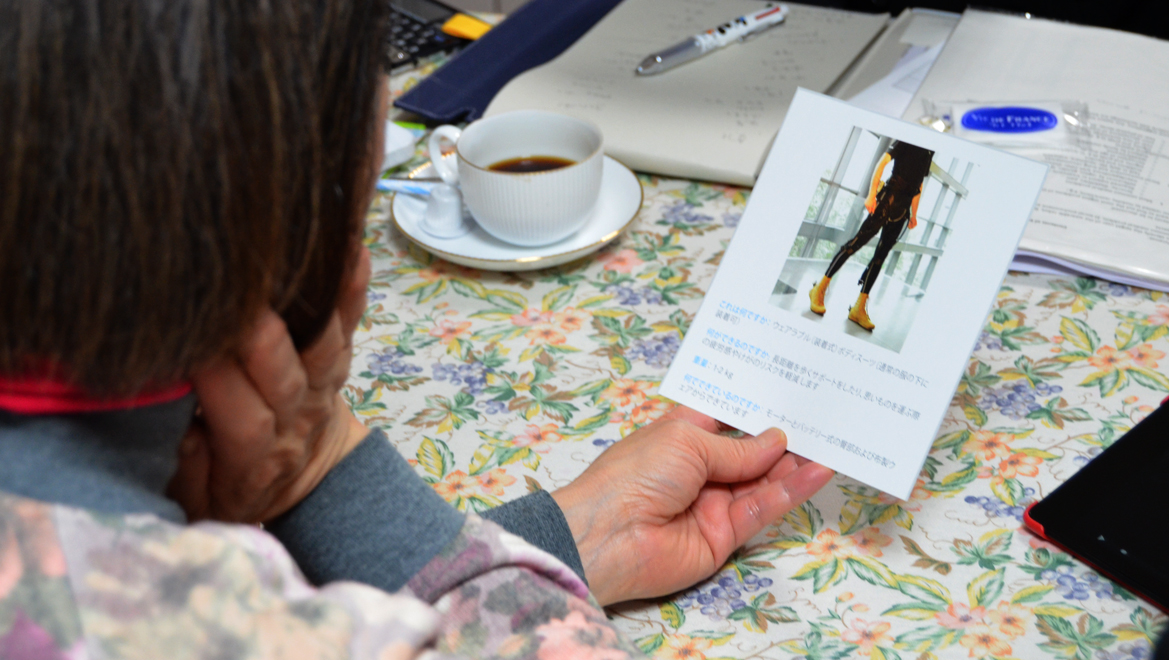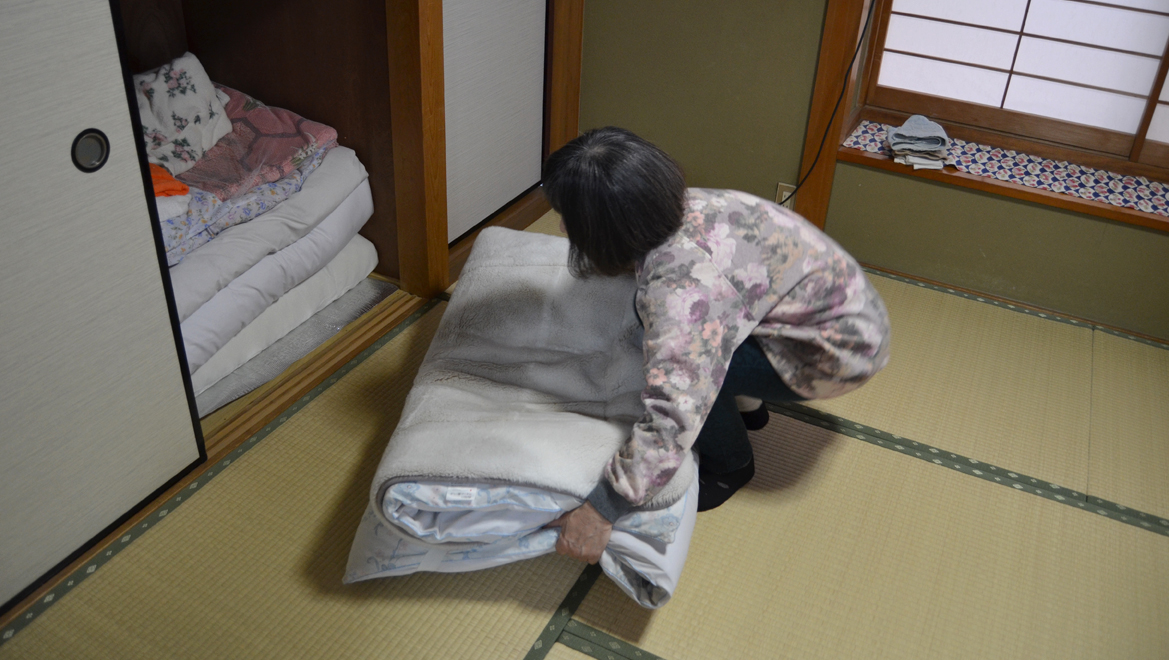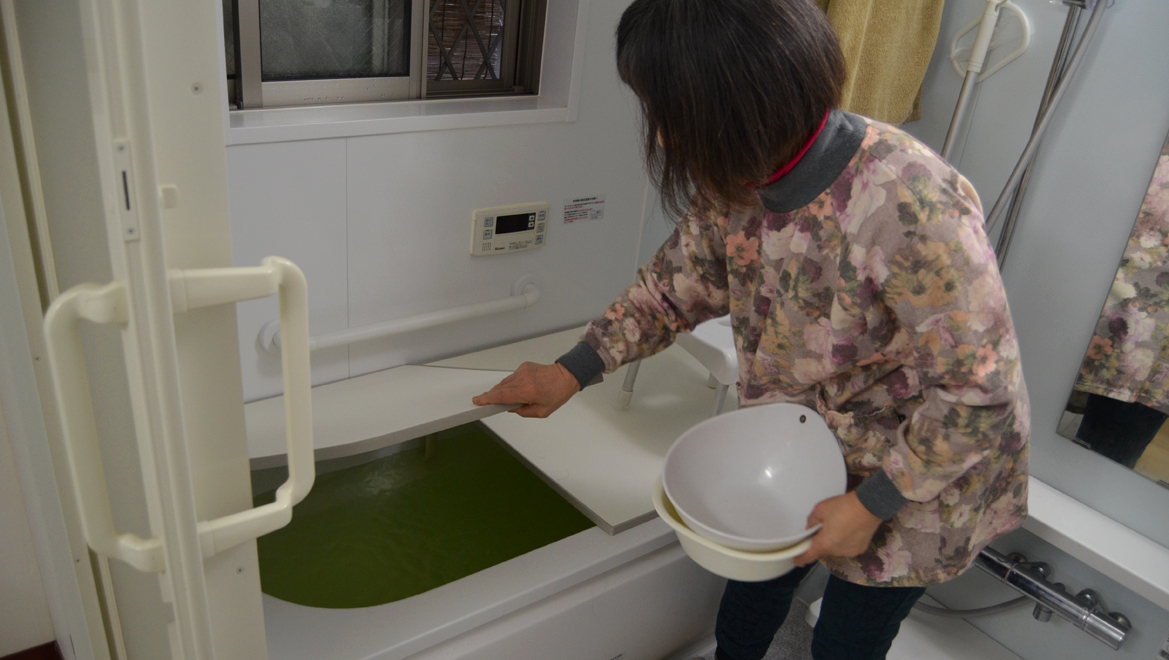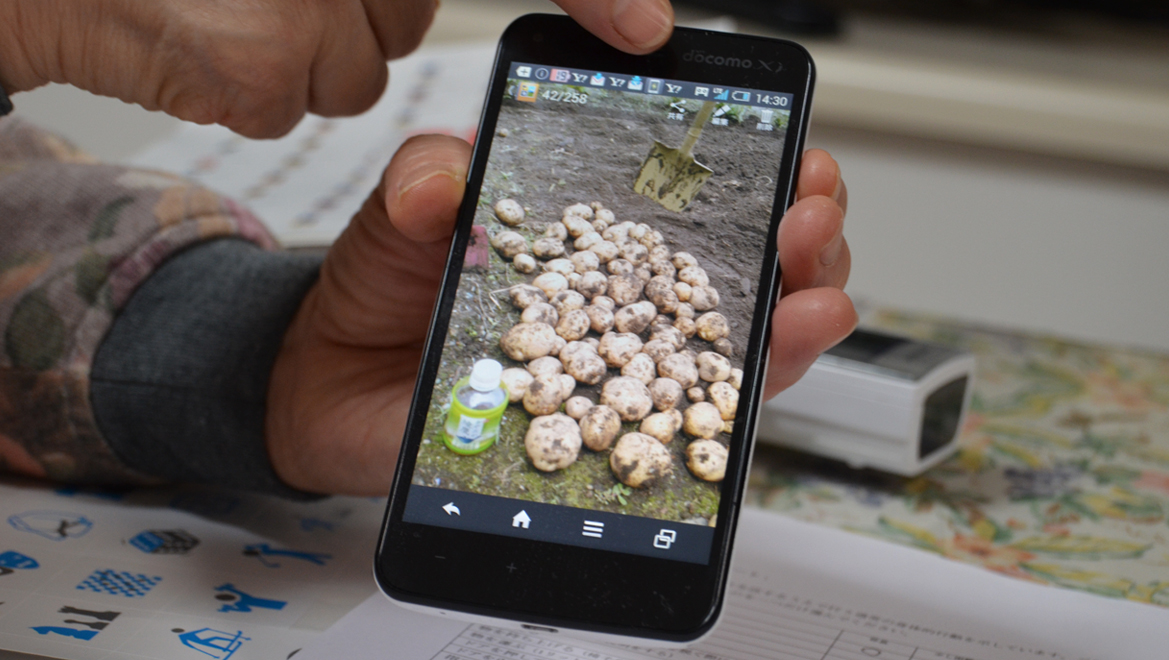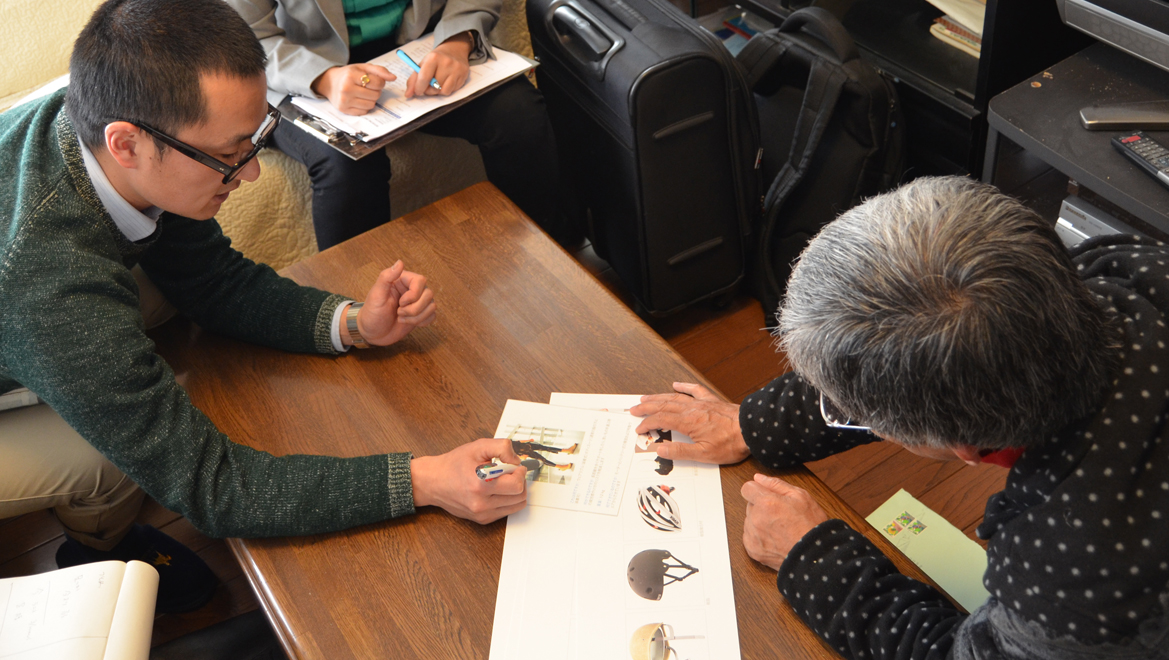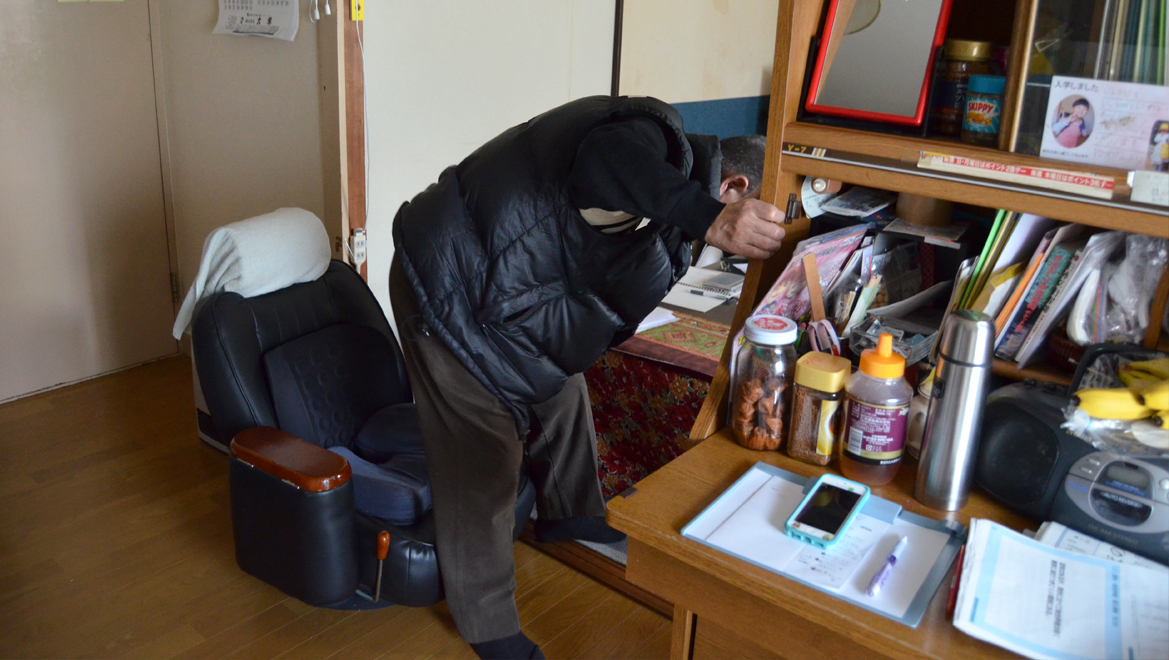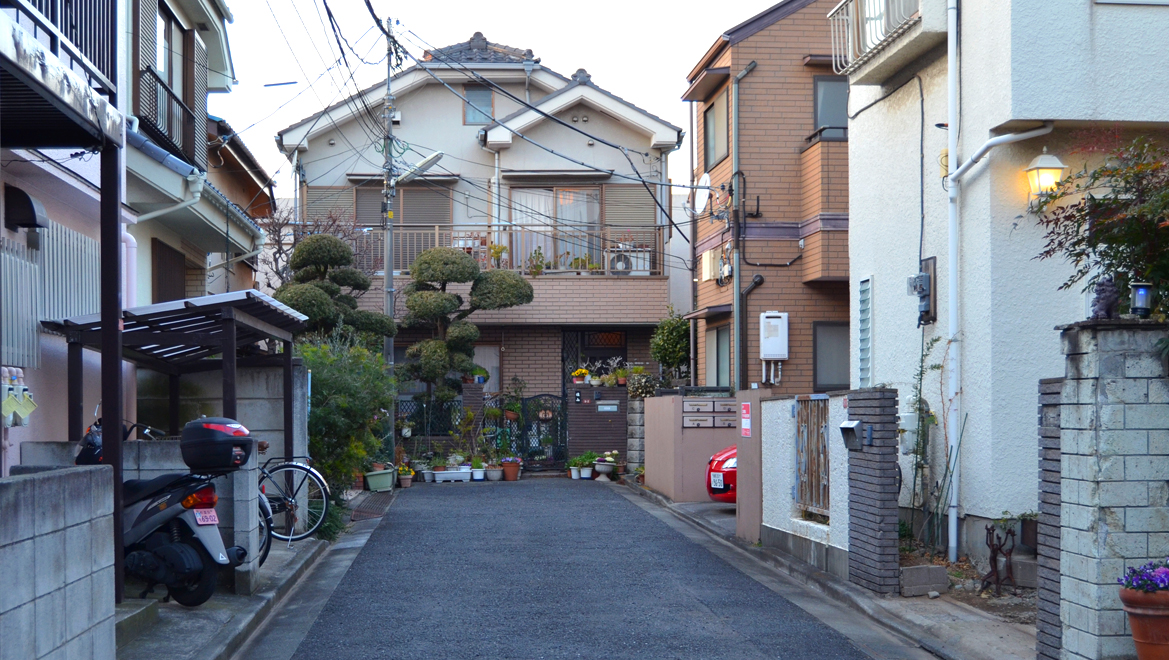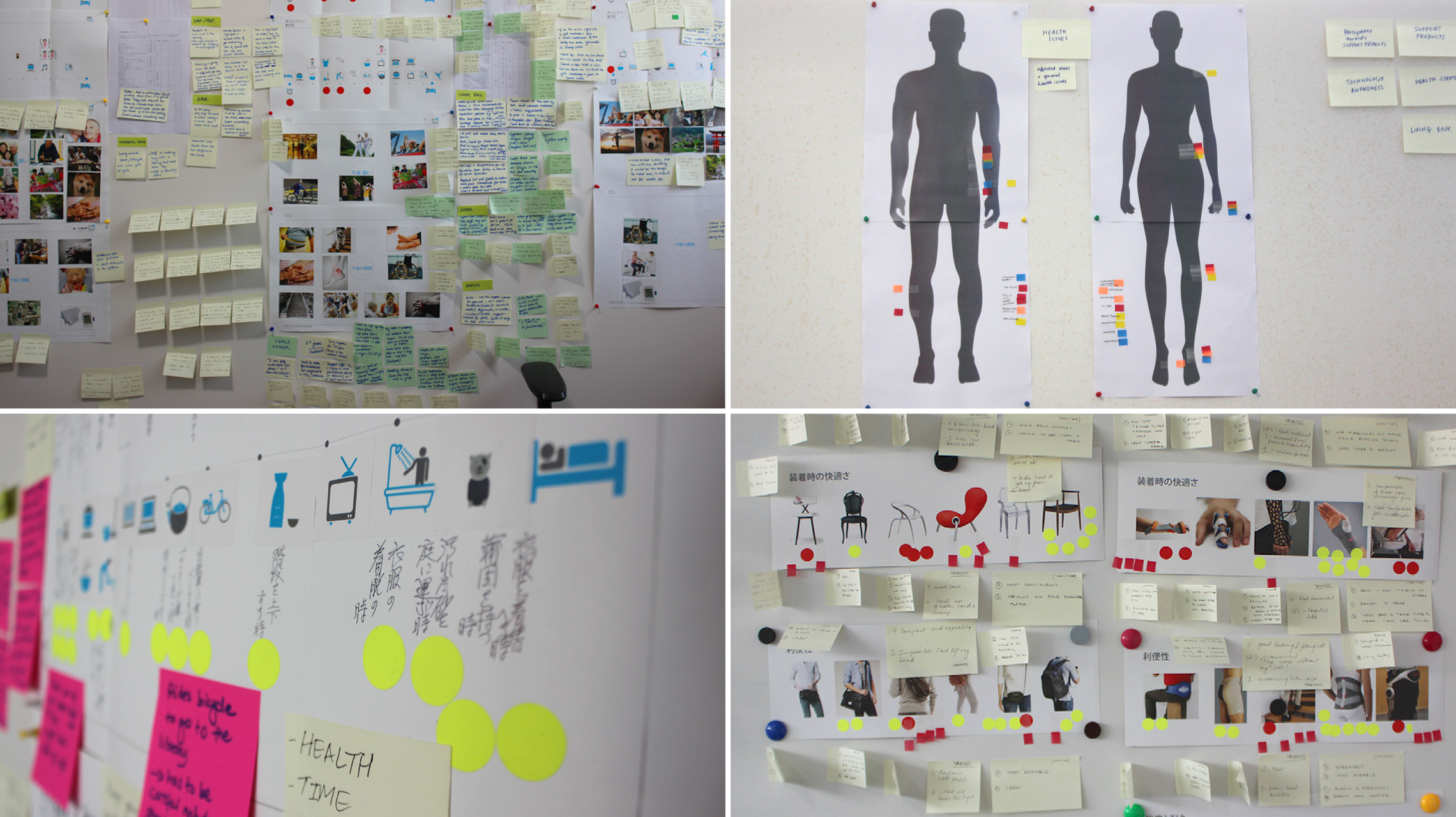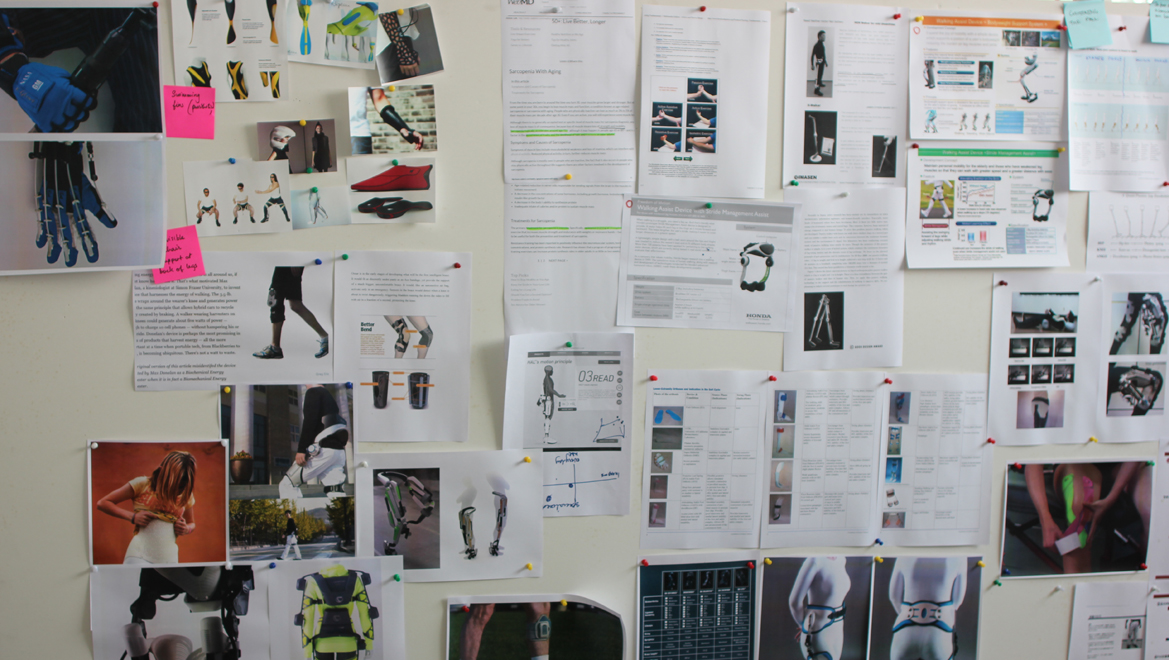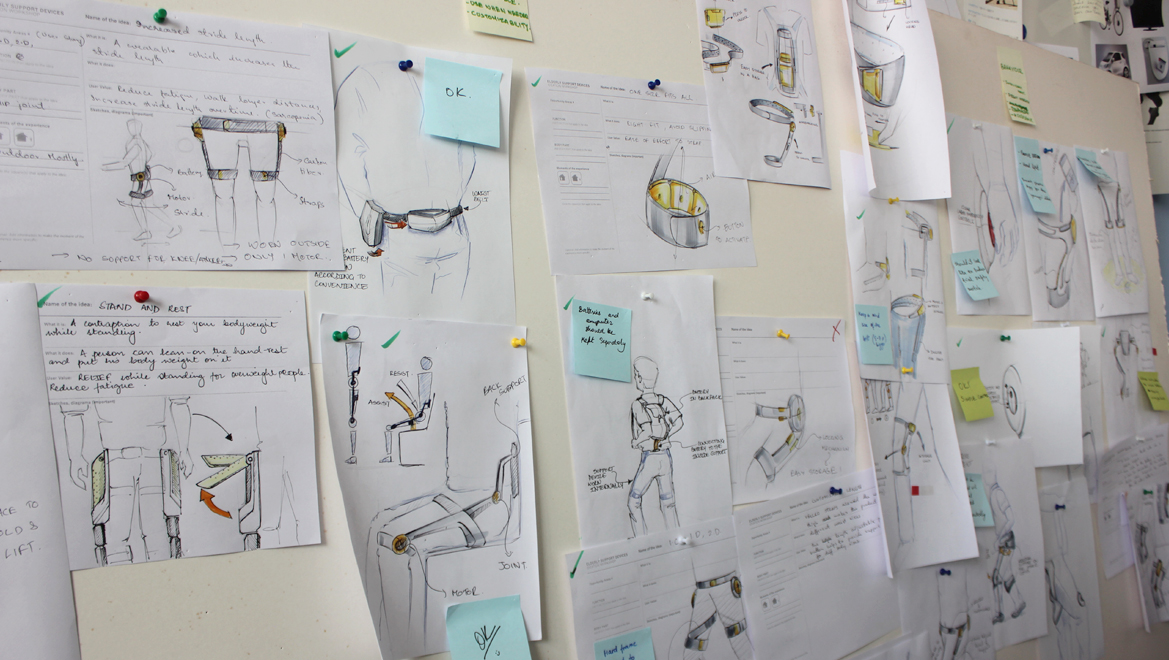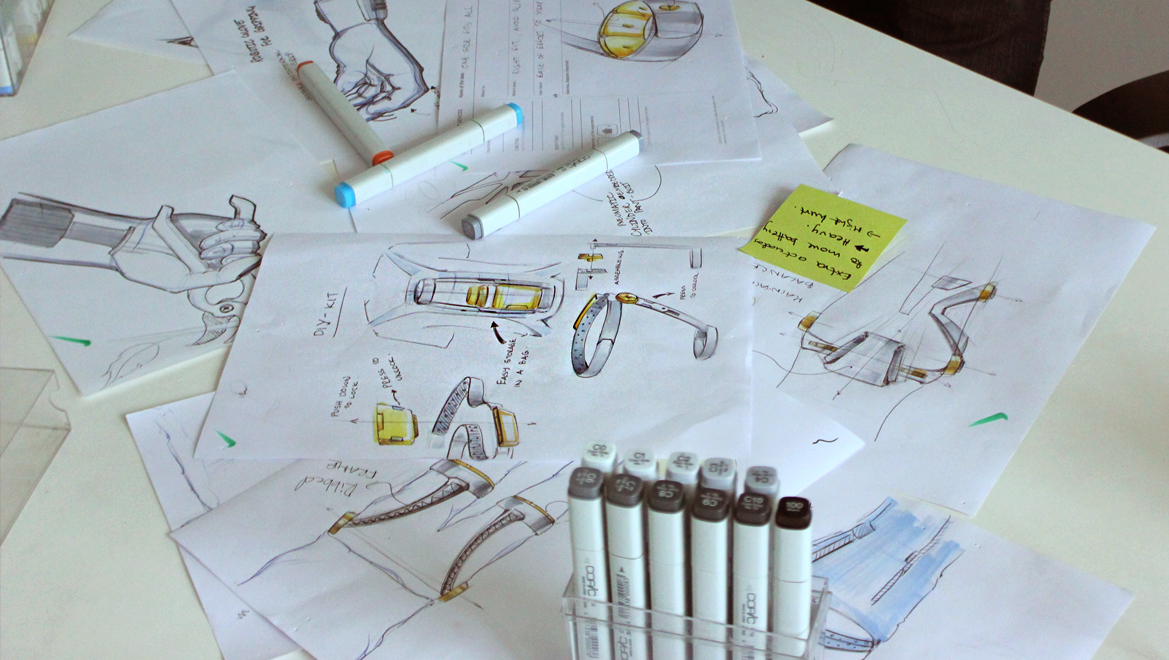OVERVIEW
Japan has the fastest growing senior population than any other country in the world. Nearly a quarter of its population is over the age of 65 and it also has the highest life expectancy compared to any major country.
The aim of this project was to find out where the main needs exist in the area of mobility for seniors in Japan and to discover their perspectives towards wearable mobility devices.
MY ROLE
As project lead I helped navigate the team through discovery to design. I planned and designed qualitative user research which we executed in Tokyo, Japan (with seniors and experts from the ecosystem). Based on the top insights formed, we designed directions and initial concepts which were discussed and later prototyped by the engineering team.
Designing Research for Japanese Seniors
A mix of male and female seniors (60 years+) who had at least one or more musculoskeletal issues, as well as some with no issues, were interviewed in one-on-one discussions at their homes.
Being physically present in their living environments helped us gain a more accurate picture of their daily lives, troubles and needs, as well as put them at ease to talk more openly.
Visual aids were woven into the discussions to help dig deeper into topics such as comfort and convenience of wearing physical support products. Image cards related to Japanese culture were used as prompts to discuss future health concerns, and wishes.
“I want to stay active and exercise… but when I walk I feel fatigued so easily.”
Speaking to Experts
In order to get an expert view on the topic, Gerontologists, Medical & Rehab experts, Physiotherapists, and Caregivers were interviewed through one-on-one sessions and focus group discussions. Their views on how mobility affects the Japanese senior population and the possible roles and functions for robotic support devices in their lives were discussed.
“The baby boomer generation wants to live independently, and will be more accepting of support devices than older generations.”
Top Findings & Design Directions
Consolidating and extracting all the data we collected on the field helped us form top insights:
- For Japanese seniors, being mentally and physically active (pursuing hobbies, contributing to society, etc.) are extremely important factors as they age. They would prefer to avoid being a burden on anyone – always maintaining their own independence, self-respect, and dignity.
- In fast paced cities like Tokyo they face many mobility difficulties due to infrastructural constraints (long train platforms, distances to reach elevators at stations, lack of resting spaces at stairways and bus stops, etc.)
- In addition to infrastructural issues, age-related health issues leave many seniors with apprehensions and troubles in being as mobile and active in the city as they would like to be. This can lead to social isolation and make them feel low in self-esteem and confidence.
- There is also a huge fear of falling (resulting in fractures and immobility) which further restricts them and makes them prone to other health issues.
“The product is priceless if it can help me walk.”
- In general, robotic support devices were perceived by the seniors as products to be used in a medical environment or for people with very severe disabilities.
With a high consciousness of self-image among Japanese people, a product that ‘looked good’ and not for the physically challenged was seen as extremely vital, as well as something that either blended in easily with their clothing or augmented their fashion look.
- Comfortable, convenient to use, easy to control, and a compact and light-weight solution were seen as the most important criteria. A product that could be carried and worn when required was desired.
“In my opinion it is better to rely on these products than on someone else.”
- Discussions with participants and experts helped highlight the knees, hip joint, and lower back as the main physical health problem areas.
- A caution on excessive support was emphasized by experts in order to not let the existing physical condition weaken with additional support. A balance in how much support is required was highlighted.
Personas & User Stories leading to Design Concepts
Keeping the findings in mind personas were created based off which user stories were co-created with stakeholders. This helped us come up with concepts based on crucial needs and preferences of the users.
The team came up with several design concepts which were altered based on technical feasibility. After several iterations some of the concepts were prototyped and tested for further feedback from the user.

